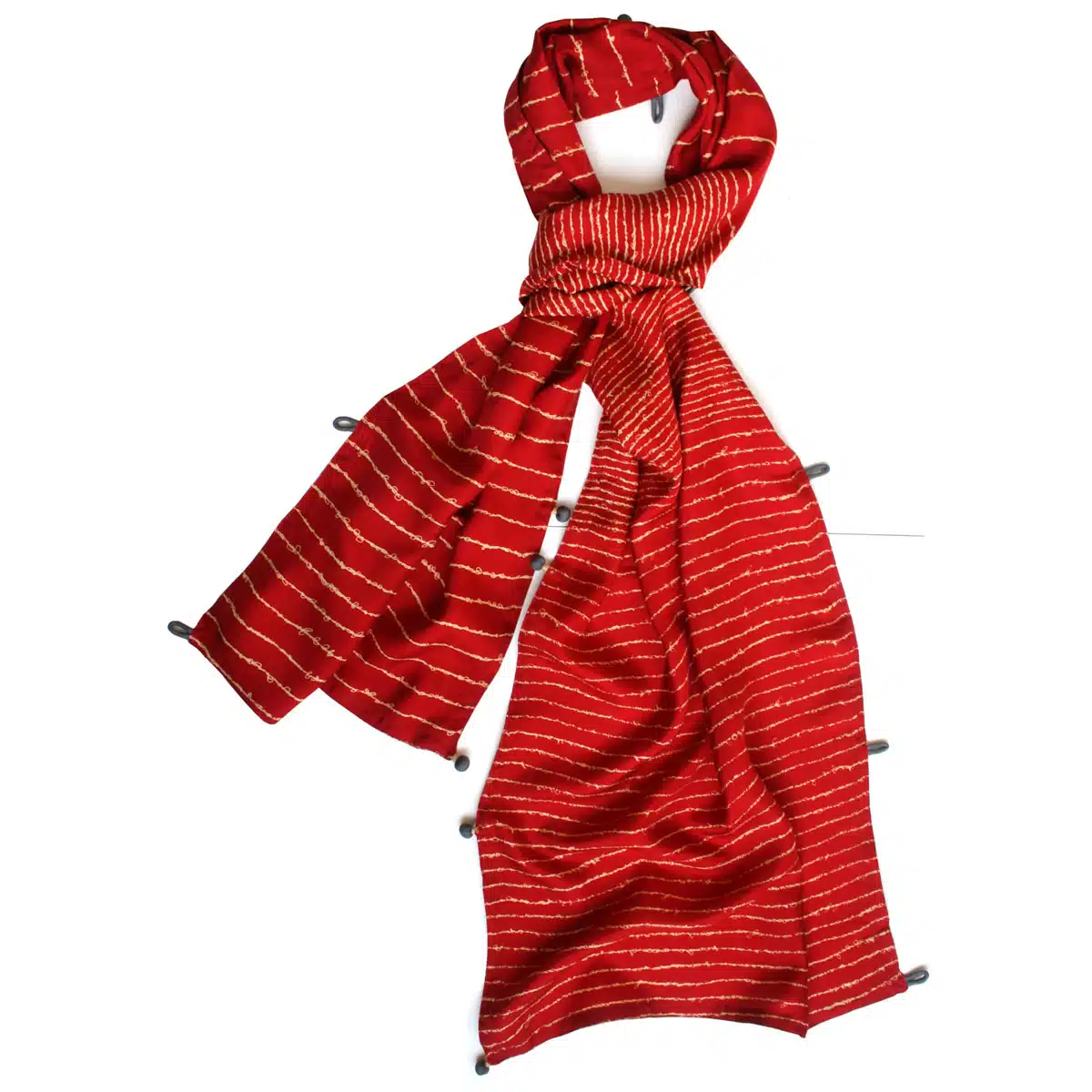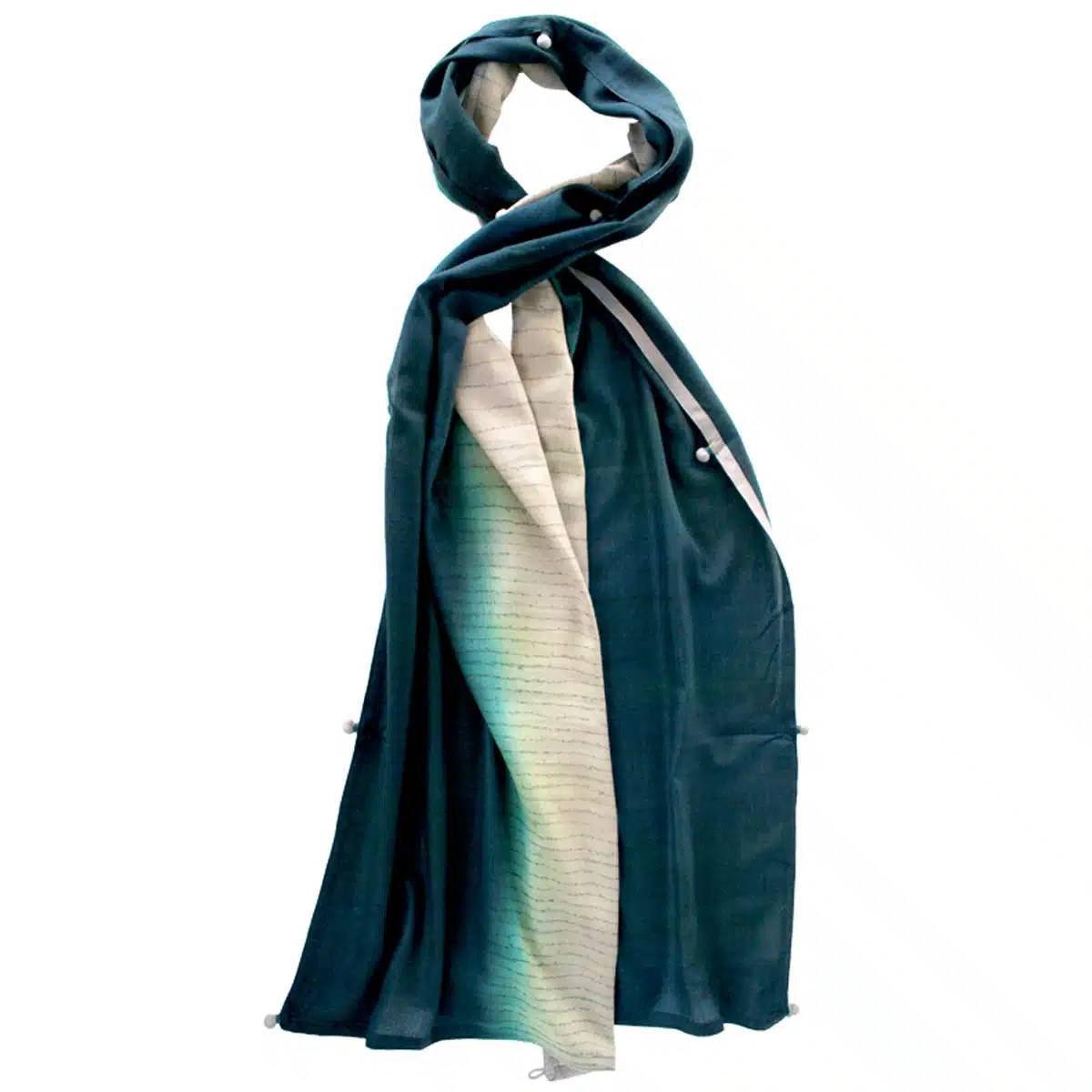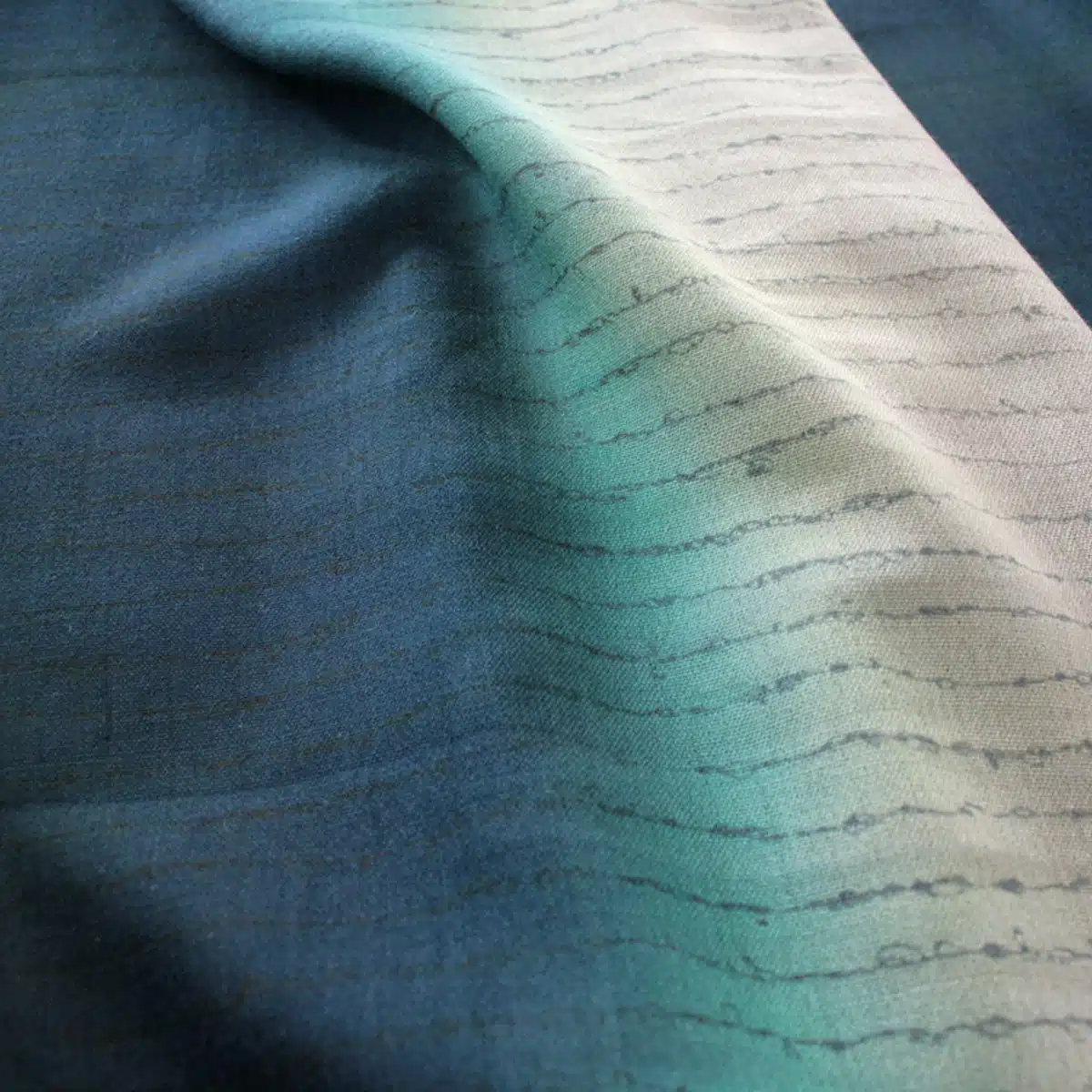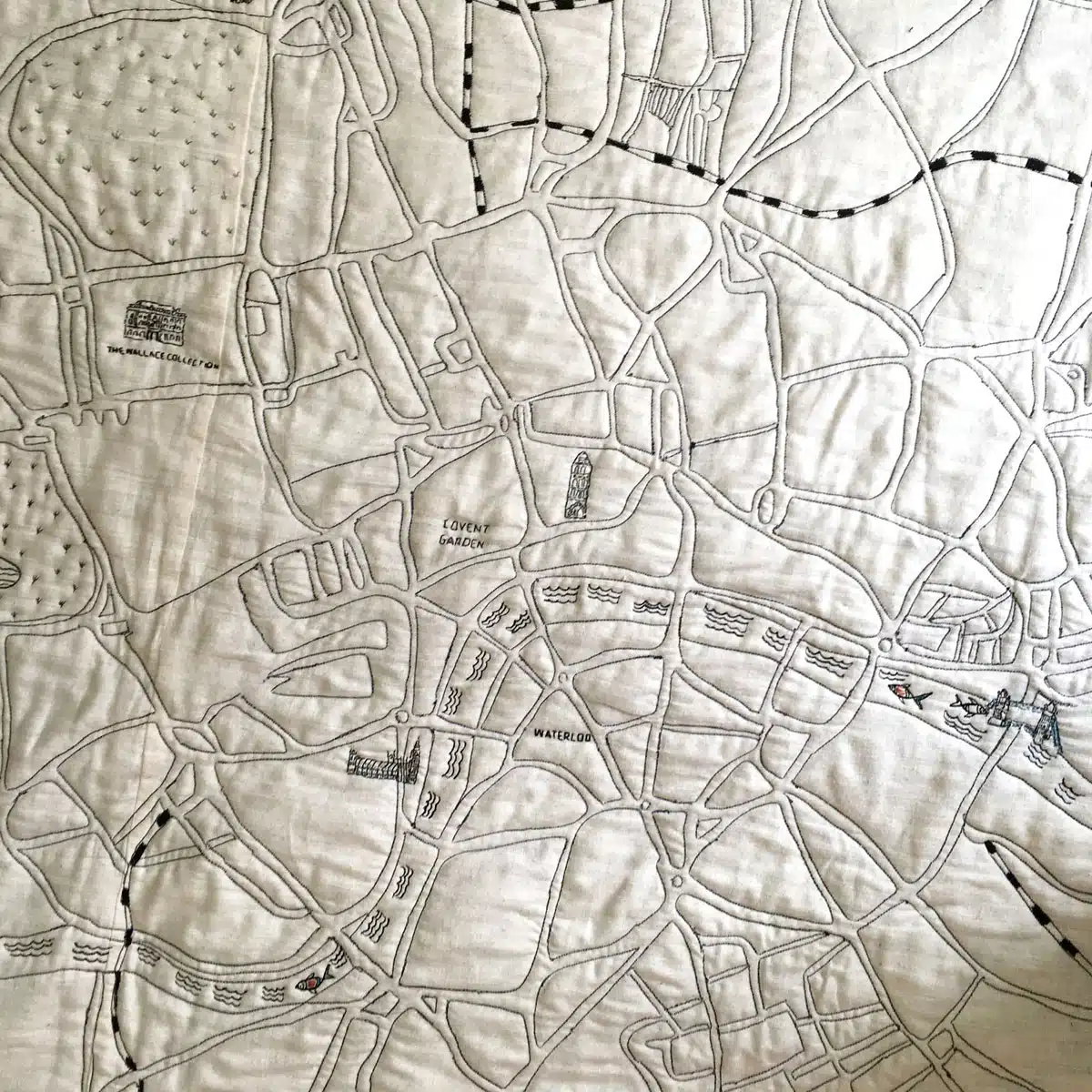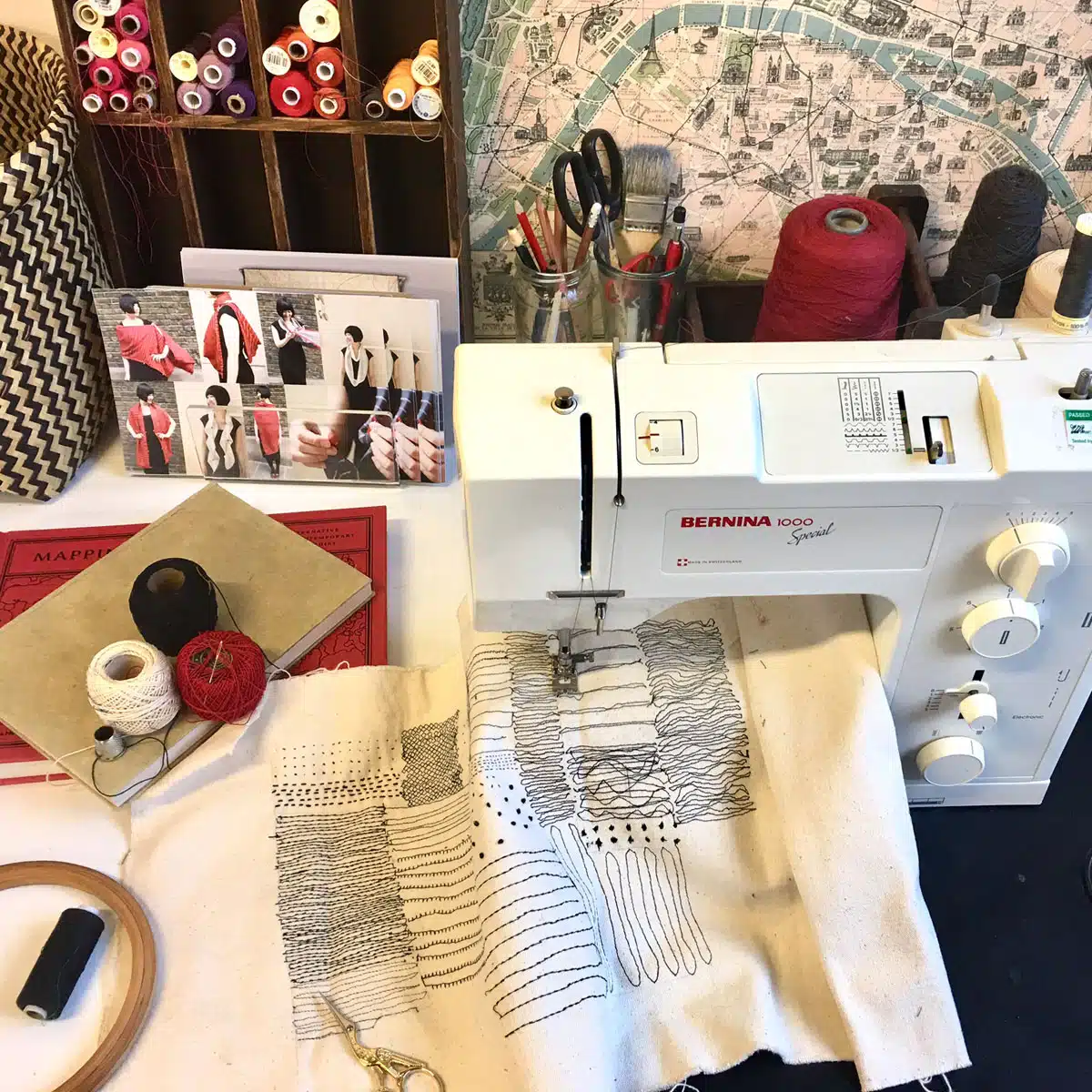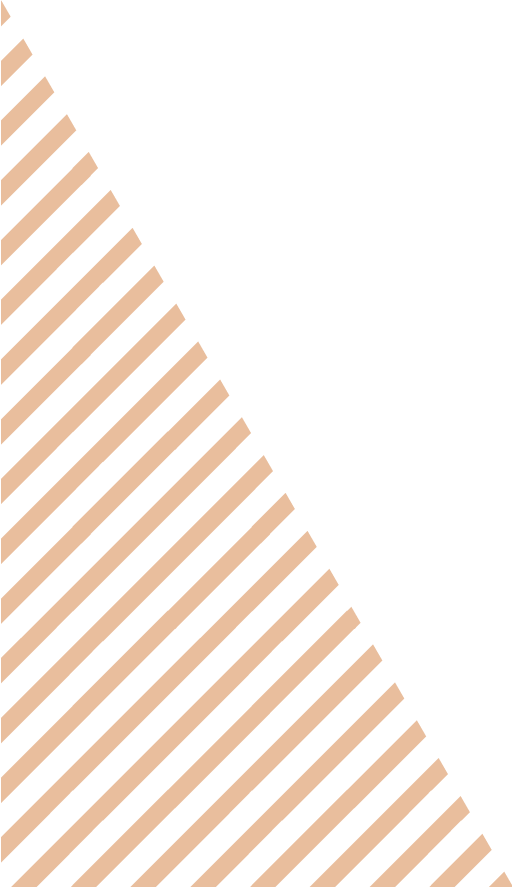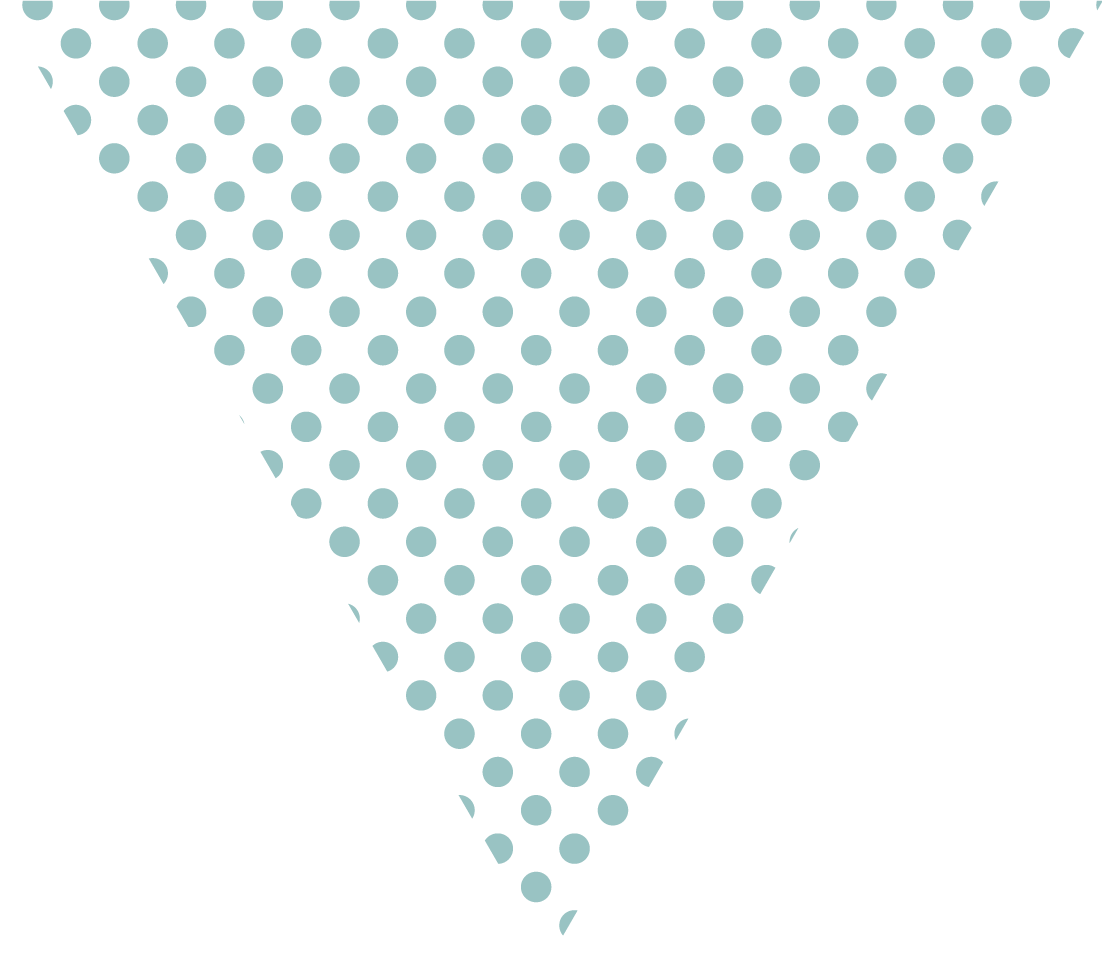Why did you become a designer?
Because through my work I can add beauty to the world and make things that are meaningful to me and to others. Good design makes life better. I feel proud to be part of the tribe that makes the world a better place.
What do you make and when did you begin?
I set up my studio in 2008, specialising in luxury handmade textiles. My work has a contemporary, pared-down aesthetic and I focus on craftsmanship and timeless design. My practice has two strands namely bespoke embroidered map quilts that map “personal narratives”; and small editions of accessories in hand-woven cashmeres, silks & fine wools.
How do you work?
I do stitching in a contemporary way using traditional textile techniques including hand- and machine- embroidery and block printing. I am drawn to strong colours, graphic compositions and minimalism.
My simple, well-made objects have a timeless quality. Attention to detail and use of natural materials are my hallmarks. I’m very proud of working with fair trade organisations in India and social enterprises in the UK. The biggest challenge has been continuing to build my practice despite the economic downturn of 2008.
What inspires you?
Good design whether in architecture, fashion, or typography. But nature is the ultimate designer.
Breakthroughs?
The first one was a place to study design at India’s premier design school, the National Institute of Design (NID), one of only six people chosen at the time. Then soon after graduating I won an all-expenses-paid scholarship to study MA Textiles in the UK. It’s been a fantastic journey ever since. I won a Crafts Council development award and now I work from a lovely studio in the heart of London – and I sell my work in the most beautiful shops in the world.
So what’s your studio like?
It’s at Cockpit Arts which is an award-winning social enterprise, housing 70 small businesses in Holborn, London. I applied through the website www.cockpitarts.com and was offered a space soon after the interview. I have natural light, access to a sink for dyeing and enough room for my tools and equipment – my criteria for a space. A huge boon is the large windows. It is such a joy to work in natural light with jazz playing on the radio.
Favourite tool?
My sewing machine. So simple but with a simple thread and needle, you can join, stitch, embroider, colour, texturise and completely transform a surface.
And your ambitions?
I want to work on creative projects that have a social dimension.
Any advice?
“A tree grows over many years, not a season,” said my tutor, Prof MP Ranjan. So nurture your creativity. With patience and hard work, it will blossom and bear fruit.
